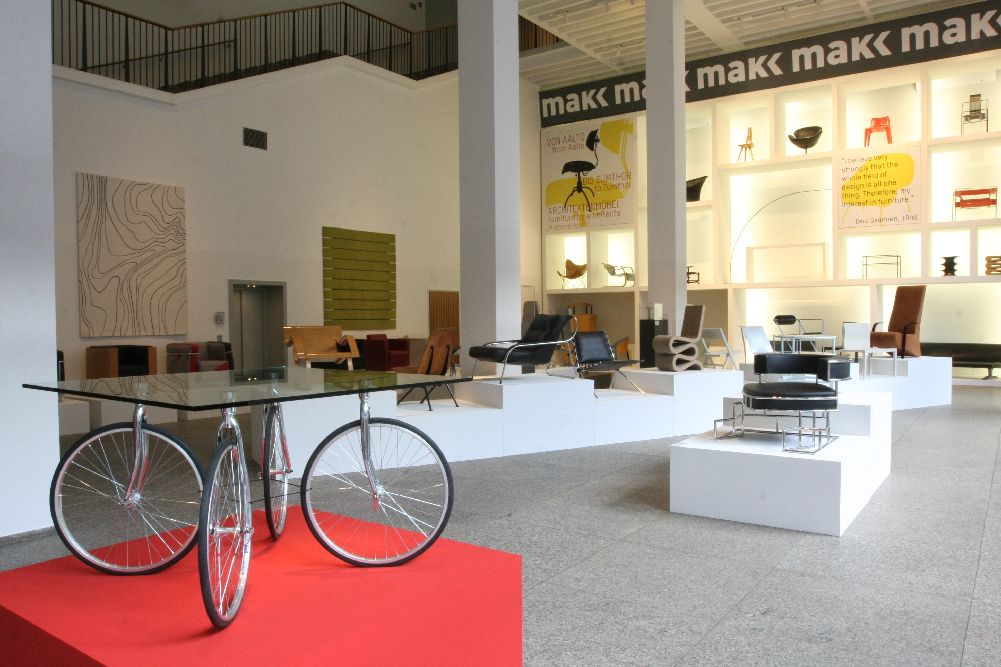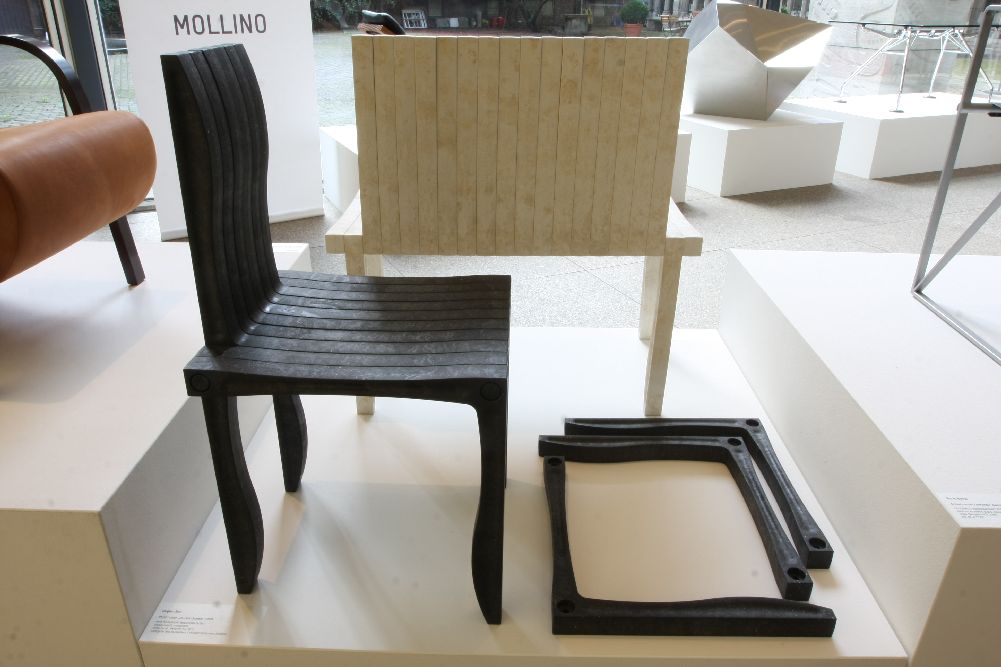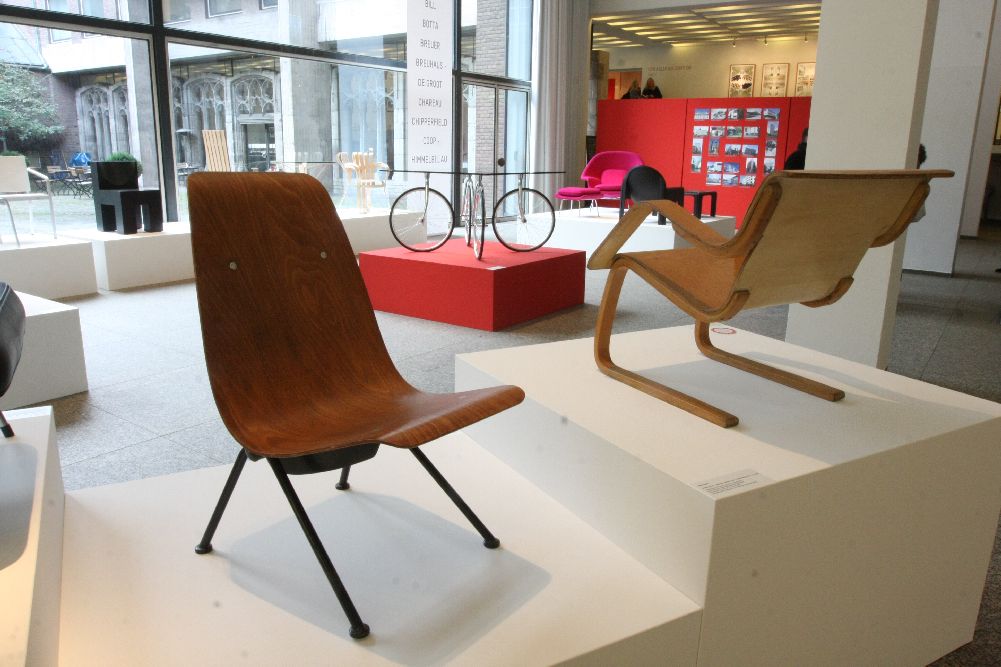As tradition demands the Museum für Angewandte Kunst Köln (MAKK) have organised a furniture themed, special exhibition to coincide with the Cologne Furniture Fair.
Under the title "Von Aalto bis Zumthor: Architektenmöbel" ("From Aalto to Zumthor: Furniture by Architects") the MAKK is presenting over 120 examples of furniture designed by professional architects.

As older readers will have long since accepted, the "Furniture Architect" is a pet subject of ours. Not just because the architects involved have created some truly fantastic works, often just out of a pure passion for their occupation and with little or no regard for any potential financial gain. But also because we believe that through understanding why "Furniture Architects" are important to the development of the furniture industry we can rediscover the basics of creating good furniture. And help improve the contemporary designer furniture industry.
In the press notes the MAKK state that many of the architects started making furniture for their projects because there was nothing suitable on the market.
We're genuinely not in the habit of contradicting long established and respected design museums.
But.
We'd argue that while that may have been a factor in occasional cases, more important was the desire to control a whole project and to ensure a formal unity throughout. Inside and out. We've got a nice quote somewhere, for example, about Egon Eiermann only agreeing to build a house in Berlin if he was also contracted to do the furniture. And Arne Jacobsen made similar demands before accepting the commissions for the SAS Royal in Copenhagen and St Cahthrine's College in Oxford. And Le Corbusier certainly didn't kit out his 1950s social housing with his own furniture designs just because IKEA had yet to be founded.
For us the distinction is important as it defines the motivation for creating the furniture and as such underlines the way the acteurs thought and worked.
What is beyond question is the importance of the works.

Using items from the museums own collection complemented by items borrowed from third parties, "From Aalto to Zumthor: Furniture by Architects" tells the story of a century of "Furniture Architects". Starting with works by the likes of Hoffmann, Wagner or Emil Beutinger who is represented by the most delightful kitchen ensemble from 1903. An ensemble that includes a seat bank unit that could be straight out the Atelier Moormann Haute Couture collection. Should they ever decide to produce such.
In comparison to the understated elegance of many of the early pieces, we couldn't help feeling that a lot of the more modern pieces were simply screaming look at me. But in that far too obvious way we know from people whose attempt at finding personal gratification through the medium of "Celebrity" has failed to such an extent they feel compelled to go into an Australian jungle to eat kangaroo testicles on live television in the hope of being remembered for what they contributed to modern society.
We could just have written soulless and unattractive.
We must clarify not all modern pieces were such. Just some.
Sitting here writing this post we can't think of any early pieces by the "Pioneer Furniture Architects" that would also fit into such a category.
One could argue the reason why a lot of pre-war furniture design is all so conservative and "normal" is that was how society was.
There hadn't been any major, or indeed minor, attacks on accepted norms.
Post post-modernism, dadaism and punk we have that experience and, yes, it is valid to challenge conventions. Especially in the context of furniture created for a building that has been designed to meet modern challenges.
Which brings us back to the reason the architect designed the furniture....
However, we suspect that the architects placed by us in this category don't want to be considered "Furniture Architects". We suspect that they want to be considered artists. And the works as creations. Or even worse "statements"
Which could lead us to ask if they belong in the exhibition? Art, design and architecture are different disciplines that can and should freely intertwine and fuse. The question is always which part is dominant. In selecting works for such an exhibition we say design. Design created with the training, eye and understanding of an architect.
Which of course raises the further question of where is System USM Haller? A furniture concept extrapolated directly from an architectural concept.

"From Aalto to Zumthor: Furniture by Architects" is a nice enough exhibition. But for us the main problem is that it simply doesn't explain enough. It simply shows.
And for a special exhibition in a specialist museum that is too little. You can get away with it in the permanent exhibition; but a special exhibition of this kind should offer more. You should leave with the impression that you have learned more about the subject.
We're fairly well clued up and enjoyed the chance to examine the works at close quarters and compare pieces.
But most people aren't. And can't.
And although there were nicely conceived and delightfully illustrated notice boards for some exhibits. For the majority there was what resembled an archive data entry card with a name and a little bit of information.
And then of course the decision to place some chairs 5 metres above the ground, half hidden in boxes so that no one can see them.
Daft.
Despite the, for us, somewhat lacklustre exhibition concept the works remain important; and indeed the idea of the "Furniture Architects" remains central to the development of what we now understand as the designer furniture industry. And as we say important in understanding where the modern industry could improve
And so in that sense "From Aalto to Zumthor Furniture by Architects" is well worth a visit. Especially during Cologne Furniture Week 2012 when entry is free.
"From Aalto to Zumthor: Furniture by Architects" runs at the Museum für Angewandte Kunst Köln until April 22nd 2012